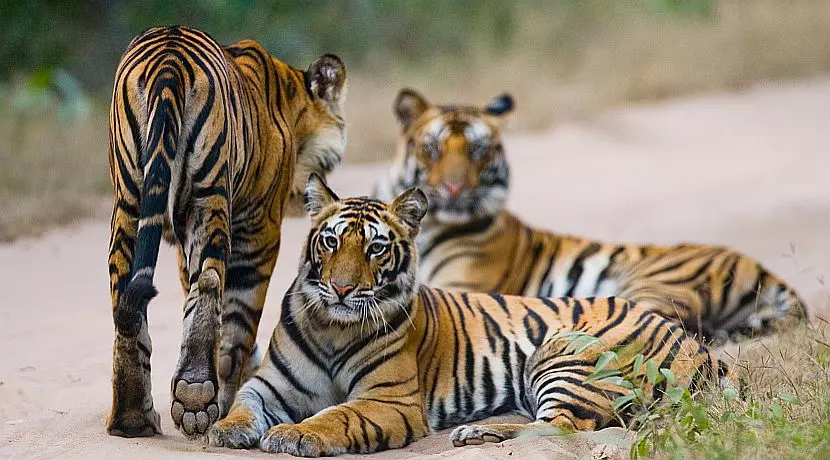If you asked a six year old to name some endangered animals, most would include tigers on their lists. They are one of the most loved and well-known of animal species at risk of extinction. What a lot of people do not know however are the numbers and trends for the wild tiger population. What factors impact on those trends and what can be done to secure a future for the wild tiger? This is what we are going to be taking a look at in more detail today.

Current Wild Tiger Population
The wild tiger population is currently on an upward trend, which is welcome news. It has to be said, however, that the increases are coming from a very low starting point.
The figures at the moment show there are somewhere between 3,200 and 3,900 wild tigers. While the trend is going up, it is still a long way from the 100,000 figure that is estimated to have been the population of wild tigers in 1900.
Although observation methods and the science of tiger conservation continue to improve, estimating numbers is still an inexact science. However, the breakdown by country is believed to be as follows:
- India - 2,200
- Russia - 500
- China - 50
- Vietnam - less than 30
So, even though the wild tiger population has improved in recent years, they still remain firmly on the endangered list.
There are several reasons for this, but the main one is the black market in tiger parts around the world. It is highly lucrative for those involved, but it is also brutal, with those involved paying scant regard to the welfare of the tiger population. The killing of a single female, for example, can have knock-on consequences that can exist for many years, and can drastically alter the tiger population.
The black market trade exists across the globe, but it is strongest in Southeast Asia. China in particular seems to have an insatiable desire for tiger products, many of which are viewed as status symbols.
Other reasons for the low wild tiger population levels include habitat loss and the competition for space that has existed for decades between humans and tigers.

The Impact Of Captivity
It’s impossible to look at the plight of wild tigers without also looking at the global captive tiger population. This situation extends way beyond the zoos of the world’s major cities, and the people who think it normal to keep a tiger as a pet.
Instead, this is about keeping tigers in captivity on an industrial scale. To see this you only have to look at the black market for tiger parts - the low numbers of tigers in the wild is in no way diminishing that trade. How is this possible?
The answer is that traders, criminals and traffickers have found new and equally horrible ways to meet demand. They do this through tiger farms. In fact, there is thought to be more than double the amount of tigers held in captivity on tiger farms around the world than there are tigers in the wild.
The farms are mostly located in Southeast Asia, and there is thought to be around 240 of them:
- China - 5,000
- Thailand - 1,450
- Laos - 400
- Vietnam – 180
Why are tiger farms important? After all, it means there are more than 10,000 tigers alive in the world instead of less than 4,000. The existence of tiger farms fuels the trade in tiger parts, however, keeping it vibrant and active. While that trade exists, wild tigers will always be at risk from poachers looking to get in on the action and take their cut.
And that is before you even begin to explore the morality of keep an animal that is the very definition of wild on a farm.

What Can Be Done To Help
Many wildlife organisations and governments around the world are working to improve the population of wild tigers. While more work in this area can and should be done, the progress to date is welcome. Increasing efforts need to be made, however, to further prevent poaching, stop the illegal trade in tiger parts, and protect the tiger’s natural habitat.
On an individual level the options are limited, particularly for people who live in countries that don’t have wild tiger populations, or who have no interest in anything made from the body part of a tiger. One thing you can do, though, is to help support the tiger’s natural habitat (and prevent poaching) by purchasing everyday products - like tissues - that come from sustainable forests.
On a pure reading of the figures there are signs for optimism when it comes to wild tiger population figures. The job is far from complete, though, so the effort continues and we can all play our part in helping preserve the tigers for future generations.














